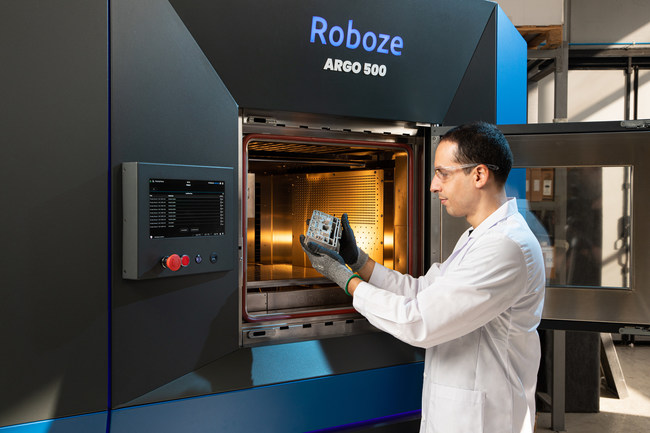Italian 3D printer manufacturer Roboze has extended its presence to the United States with the opening of a U.S. headquarters in Houston, Texas. The company says that it will hire over 100 employees over the next two years as a means of aiding the country’s re-shoring of production, as well as to reduce warehouse costs and handle supply chain challenges presented by the pandemic.
Roboze is one of a handful of manufacturers that makes what are considered the third generation of extrusion 3D printers that compete with the market leader, Stratasys, in that they are capable of 3D printing with high-temperature, engineering-grade materials. While Roboze machines have a similar target market price as Stratasys, there are other companies making their own high-temperature machines as well, including INTAMSYS, 3DGence, 3ntr, AON3D, miniFactory, Essentium and, soon, 3D Systems—although very little is known about this last one.
Roboze was among the first in this segment, offering a beltless drive system that it claims results in higher precision and greater repeatability. The company’s most recent product is the Argo 500, which gets its name from its robust 500x500x500 mm (19.7” x 19.7” x 19.7”) build volume. The Argo 500 has an extruder that can reach 842 °F (450 °C) and a heated chamber capable of hitting 356 °F (180 °C), allowing it to print with high-temperature materials like ULTEM, PEEK and carbon fiber reinforced versions of those plastics.
In turn, this makes it possible to 3D print parts that may make suitable polymer replacements for a subset of metal components. So far, customers including GE and the U.S. Army have determined that the company’s products are capable enough to purchase them.
With its new Houston location, Roboze hopes to situate itself among the universities, aerospace and energy companies there while also aiding the U.S. in addressing supply chain gaps that have been exposed as a result of COVID-19. Not only can 3D printing help as a stopgap during supply chain crises, but by having facilities in the U.S., Roboze hopes to reduce greenhouse gas emissions associated with transportation.
Texas is indeed one of the fastest growing cities for tech, with Deloitte listing 16 Texas businesses in its Technology Fast 500 list from 2019. Three tech giants, HP Enterprise, Oracle and Tesla are either relocating headquarters or setting up new facilities in the state, in part due to the low taxes compared to California. 3D printing businesses are also popping up in the Lone Star state, including legacy plastics maker Evonik, Momentum Technologies, high temperature printer maker Essentium, additive construction startup ICON, and GE metal 3D printing subsidiary Concept Laser. Universities in Texas are also very active in 3D printing research, particularly Texas A&M.
“Houston ranks as one of the top U.S. cities for manufacturing plants and industrial employment and home to exciting scientific initiatives at the Houston Spaceport and Rice University,” said Roboze founder and CEO Alessio Lorusso. “We are delighted to open up new headquarters in Houston and bolster our team with the best and brightest engineers and technical workers in Houston to position the city as one of the most important 3D printing hubs globally.”
The Italian startup will take on 30 new employees in the next three months, padding its engineering, marketing and sales teams in the country as it develops more products. By the end of 2021, it aims to expand its staff by 70 percent, mostly in Houston.
